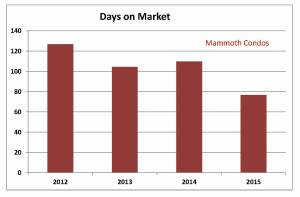Overall, the real estate market in Mammoth Lakes and surrounding areas has been relatively flat for the last three quarters. Prices have not changed much in the condo segment and neither Buyers nor Sellers have much more negotiating power than the other.
IS IT A BUYERS’ MARKET … OR A SELLERS’ MARKET?
It is neither clearly a Buyers’ market nor a Sellers’ market. When it is one or the other, negotiations tend to go more smoothly…
In a Sellers’ market, there are fewer properties for sale (supply) to meet the demand of a larger number of buyers. Therefore, buyers tend to meet sellers’ demands on the price and terms of a sale. In a strong Sellers’ market, you hear about multiple offers and sales prices going for more than the asking price. And if buyers dare to ask seller to make any repairs, they are often left holding the bag and responsible for fixing things after they own the property. And if an appraisal comes in low, the buyers often accept it (unwillingly) and forced to pony up more of a down payment.
In a Buyers’ market, there is an oversupply of properties on the market and sellers are happy to receive an offer. Sellers will usually come down lower in price and be more agreeable when negotiating repairs.
But when it is neither, like it is right now, we are seeing it take longer to consummate a deal, more counter offers (two to three), not too many multiple offers, and tougher/longer negotiations on repairs. Sometimes we see standoffs between buyers and sellers; buyers think they should be catered to and sellers think they don’t need to cater to the buyers. Bluffs are called and one side usually gives in a little bit and things can move forward.
Examples: Recently, a set of buyers made an offer at about 90% of the asking price on a house. The seller countered back by coming down to 98.4% of his asking price. The buyers came up a bit in price and then negotiations stalled. The seller did not budge any more. Eventually, the buyers came up to the seller’s price and are now happily in the home.
However, at the same time in another transaction, the opposite happened. Buyers offered 90% of asking price. Sellers came down less than 1% and then negotiations stalled. Buyers waited for about two weeks and then tried again at 95%. The sellers took some time to think about it (and realized there was a chance they would not get any other offers), and came all the way down to meet the buyers’s price.
The Edge Goes To… If we had to choose, Mammoth has most recently been in a slightly Sellers’ market. One way this manifests is the average sales price as a percentage of a property’s most recent list price. This number has crept upwards for Condos from 96.3% in 2014 to 96.7% in recent months (and up from 95% since the bottom of our recent market in 2012).
Buyers were coming in with offers around to 90% of list price in 2014 and ending up at 95-96% of list price. Lately, most buyers (other than the ones in the example above!) are coming in a little stronger knowing that sellers are not entertaining ‘lowball’ offers anymore.
When negotiating repairs, buyers are asking for more than they know will get agreed to. On average, Sellers are agreeing to just under half of what buyers are asking for. And they are pushing the responsibility of woodstove insert conversion (new Town of Mammoth Lakes ordinance as of 2013) onto the buyers.
In addition, condos are selling faster. Average days on market until escrow gets opened is 77 days in the first half of 2015 versus 110 days in 2014.
Why are we not seeing the crazed Sellers’ market conditions that exist in other California markets, like Santa Monica, Newport Beach and The Bay Area, where prices are above where they were at the last bubble in 2005-06? Maybe because those other areas are fundamentally experiencing an increase in demand from foreign investors and an improvement in job markets. And because Mammoth has been affected by the current four year drought that has produced subpar ski conditions, which have weighed on buyers’ decisions whether or not to invest in a ski property.
How long will this slight edge go to Sellers? Well, it can depend on several factors, like interest rates (if they rise like they are supposed to, it may force sellers to become a little more flexible in order to accommodate the decreasing buying power of buyers) and inventory (see our blog post on Patterns in Inventory).







